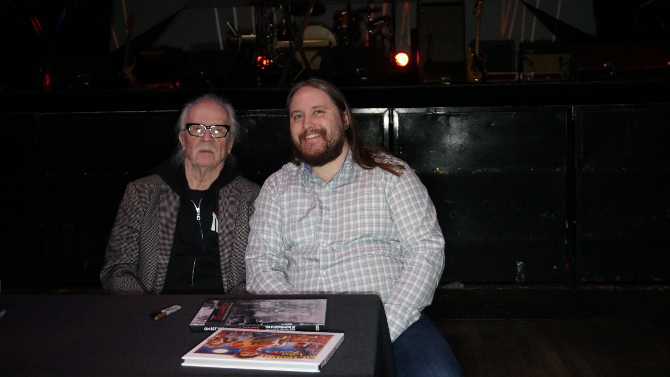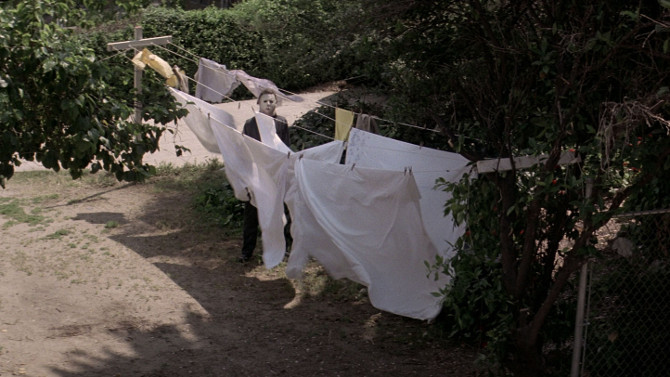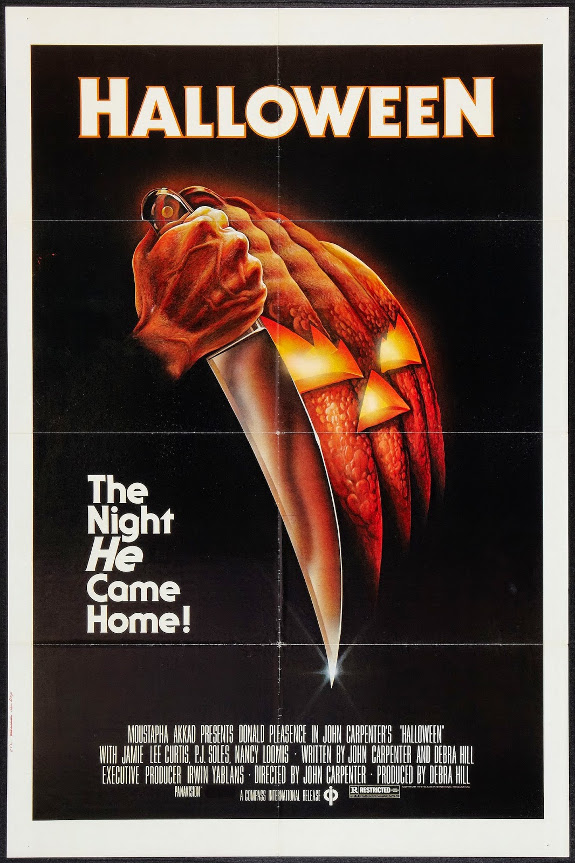The penultimate movie to watch on October 31st, John Carpenter’s 1978 motion picture Halloween is the king of the slasher horror genre, fusing a villain of pure evil with suspenseful subtlety that keeps the viewer on the edge of their seat.
Co-written by John Carpenter and Debra Hill (who also produces), the simple yet effective story begins with a young Michael Myers murdering his sister on Halloween night, 1963, in Haddonfield, Illinois. Committed to the Smith’s Grove Sanitarium, the Myers home, even fifteen years later, sits empty, dilapidated and believed by most community members to be haunted.
Set in this quaint little town, it is autumn once again (circa 1978), and on October 30th, a now twenty-one year old Michael Myers has escaped from the insane asylum. His doctor, Loomis (Donald Pleasence), was planning on attempting to lock him up for good, as he knows the danger that lies behind the facade of the completely silent man. He is perhaps best described as evil incarnate.
Returning to his hometown, the first person he spots is a bookwormish teenager named Laurie (Jamie Lee Curtis – in her first film role), deciding to stalk her, his new prey. Wearing an eerie white mask (a funny piece of trivia finds the prop department on the micro budget movie purchasing the cheapest mask they could, that of William Shatner from Star Trek – with some spray painting, hair teasing and some adjustments to the eye holes, it became a thing of horror legend) and dark blue mechanic’s outfit, Laurie continuously spots the unusual figure in the distance, behind cars and laundry lines, always with a keen eye on her. Quite rightly, it unsettles her.
Babysitting Tommy Doyle (Brian Andrews) on Halloween night, she hopes to get together with her friends, Annie (Nancy Kyes) – who is babysitting Lindsey Wallace (Kyle Richards) across the street, and Lynda (P.J. Soles), who hopes to drop by with her boyfriend later in the evening. To use an oldie but a goodie, ‘something wicked this way comes’, and it does not bode well for the oblivious teens.
Though often called a slasher flick, and it is (after all, the villain carries around a giant kitchen knife), what elevates this picture is its slow-burner development of suspense and sheer terror. As if we were in on the vile actions, the viewer often sees Myers’ perspective as he gazes at his would-be victims like he’s an inanimate object (perhaps most evident in the opening scene, where Carpenter utilizes first-person perspective so that we too are the killer – his audible breathing and footsteps adding to the palpable atmosphere, it feels like one continuous shot, but there are actually three hidden cuts). At other times, we alone see his stalking figure through the window or in the background, knowing that danger is at hand, whilst the unsuspecting high-schooler’s continue their shenanigans in ignorant bliss (other than Laurie, who is more focussed on her surroundings, mostly due to the fact that she does not have a boyfriend to distract her). A prime example, we watch in fearful anticipation as one gal waits for her boyfriend to return with the beer. . . he enters with a ghostly sheet over his head, only the audience knows that it is not who she expects. And though there is violence onscreen, much of it is conducted with subtlety, allowing the mind to imagine the full horror of the happenings.
You could almost say that Halloween is somewhat akin to a jack-in-the-box, as we know that something is going to occur, but are in constant suspense as to when it will happen; where it differs is that the attacks can come from left or right, up or down, front or back – a spine-tingling sensation that induces your fight or flight mode. Adding to the terror is the primal music, written by John Carpenter himself; its simplicity, echoing the one-track mind of the stalker, doing something much along the same lines as John Williams’ score in Jaws. It is funny, another thought that came to mind before watching Halloween again is the fact that Michael Myers is very much like the Grim Reaper, caring not about any person, just wanting his souls, trying to slake his bloodlust. . . though what I did not recall is that Blue Öyster Cult’s “Don’t Fear the Reaper” is heard in the film – a clever touch to be sure. Likewise, the discussion on fate heard in the secondary school classroom also feeds into the tale, our fear of death falling into the hands of this take on the Grim Reaper.
A trendsetting film, though it was not the first slasher flick, it influenced an entire sub-genre and group of filmmakers, leading the way for future franchises like A Nightmare on Elm Street, Friday the 13th and Scream, along with a slew of standalone movies (and its own sequels). Its tropes have been used time and time again, and Carpenter’s distinctive style (influenced by icons like Hitchcock – notice the character of Dr. Loomis is actually named Sam, the same name of an important character in Psycho, while casting Janet Leigh’s daughter is another interesting connection), adds a unique touch to the horror genre (something that was rarely duplicated, despite many attempts to do so).
One of the most successful independent films of all-time, Halloween is now considered a classic in a genre that has had so many duds. Intriguingly, it was filmed in early spring, and they had to purchase and paint paper leaves, gathering them up to reuse them (due to the measly 300,000 dollar budget). Another cool piece of trivia finds the kids watching the 1951 film The Thing from Another World on tv, which Carpenter would remake in 1982 as The Thing. A fascinating film for fright night, it is packed with startles, scares, suspense, striking cinematography and so much more. So, light up your jack-o-lanterns and take a stab at watching this classic horror film on Halloween, it highlights “The Shape” of things to come.





Sounds like a perfect movie for this time of year – thanks for the tip – I’ll check it out!!